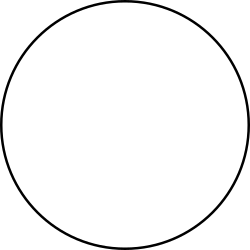Top Qs
Timeline
Chat
Perspective
List of asteroid close approaches to Earth in 2010
From Wikipedia, the free encyclopedia
Remove ads
Below is the list of asteroid close approaches to Earth in 2010.
Remove ads
Timeline of close approaches less than one lunar distance from Earth in 2010
Summarize
Perspective
A list of known near-Earth asteroid close approaches less than 1 lunar distance (384,400 km or 0.00257 AU) from Earth in 2010, based on the close approach database of the Center for Near-Earth Object Studies (CNEOS).[1]
The CNEOS database of close approaches lists some close approaches a full orbit or more before the discovery of the object, derived by orbit calculation. The list below only includes close approaches that are evidenced by observations, thus the pre-discovery close approaches would only be included if the object was found by precovery, but there was no such close approach in 2010.
This list and the relevant databases do not consider impacts as close approaches, thus this list does not include any of the objects that collided with Earth's atmosphere in 2010, none of which were discovered in advance, but were observed visually or recorded by sensors designed to detect detonation of nuclear devices.
Rows highlighted red indicate objects which were not discovered until after closest approach
Rows highlighted yellow indicate objects discovered less than 24 hours before closest approach
Rows highlighted green indicate objects discovered more than one week before closest approach
Rows highlighted turquoise indicate objects discovered more than 7 weeks before closest approach
Rows highlighted blue indicate objects discovered more than one year before closest approach
(i.e. objects successfully cataloged on a previous orbit, rather than being detected during final approach)
Warning times by size
This sub-section visualises the warning times of the close approaches listed in the above table, depending on the size of the asteroid. The sizes of the charts show the relative sizes of the asteroids to scale. For comparison, the approximate size of a person is also shown. This is based the absolute magnitude of each asteroid, an approximate measure of size based on brightness.
Absolute magnitude H ≥ 30 (smallest)

(size of a person for comparison)
Absolute magnitude 30 > H ≥ 29
Absolute magnitude 29 > H ≥ 28
Absolute magnitude 28 > H ≥ 27
Absolute magnitude 27 > H ≥ 26
Absolute magnitude 26 > H ≥ 25
- After closest approach: 0 (0.0%)
- < 24 hours before: 0 (0.0%)
- up to 7 days before: 1 (100.0%)
- > one week before: 0 (0.0%)
- > 7 weeks before: 0 (0.0%)
- > one year before: 0 (0.0%)
Absolute magnitude 25 > H (largest)
None
Notes
- Distance from the center of Earth to the center of the object. See the NASA/JPL Solar System Dynamics Glossary: Geocentric. Earth has a radius of approximately 6,400 km.
2015 AQ43 may have passed as close as 0.00012 AU (18,000 km; 11,000 mi) (0.05 Lunar Distances) from the Earth on January 15, 2010, but the nominal distance suggests it only passed 5 LD away.
Remove ads
See also
References
Wikiwand - on
Seamless Wikipedia browsing. On steroids.
Remove ads





